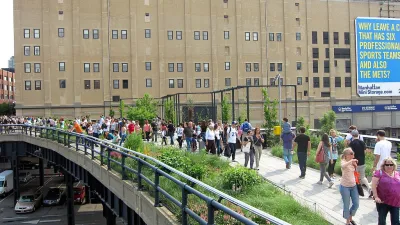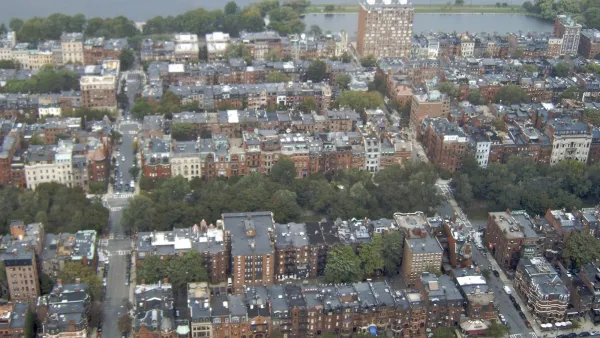One common argument against new housing (especially in Manhattan) is that the city is "overcrowded."

In Manhattan (where I live), one common argument against building any new housing is that the city is "overcrowded" and needs fewer people. This argument is not possible to disprove, since "overcrowding" is a subjective concept: my idea of crowding is your idea of energetic. Having said that, the "overcrowding argument" against new housing is based on a questionable assumption: the idea that if you don't build housing, people will just magically disappear from New York and other cities, causing the city to turn into some sort of small-town paradise.
In fact, when people are priced out of Manhattan, they react in a variety of ways. First of all, the very poorest become homeless and sleep or beg on this streets. This makes the streets even more crowded: in addition to dodging other pedestrians, we have to dodge people who are lying down in the street. Some of them sleep in the subways, making the subways more crowded.
Other people who leave Manhattan move to New York's outer boroughs or to its suburbs. Do they reduce crowding? Not if they work in Manhattan. If they take public transportation, they make the subways and commuter trains more crowded than if they could walk or bike to Manhattan jobs. If they drive, they not only increase traffic congestion but create more automobile-related pollution. If they don't work in Manhattan, they create congestion somewhere else.
Still others move to other metropolitan areas. Do they reduce New York's crowding? I guess so, but at a heavy cost. When a New Yorker moves to a new city, he or she makes that new city a little more crowded. And if the mover drives to work (as most non-New Yorkers do), he or she creates more pollution of various types than would be the case if the mover stayed in New York and rode a subway to work. If the mover's household gets more housing space, they have more space to heat and cool and decorate, increasing their carbon footprint. And if they moves to a less temperate climate (such as the Deep South or the upper Midwest) that person will create more heating and cooling, thus increasing greenhouse gas emissions. (On the other hand, households who move to southern California often reduce their carbon footprint by using heating and air conditioning less, even if they drive more than New Yorkers.)
Moreover, New York's current level of crowding is hardly unprecedented. Manhattan is actually less populous than it was for the first half of the 20th century: in 1910, Manhattan had 2.3 million people, almost 50 percent more than its current population. Parts of Hong Kong still are far more dense than Manhattan: the Mong Kok district has 340,000 people per square mile, about five times Manhattan's current density and about three times Manhattan's 1910 density.

Analysis: Cybertruck Fatality Rate Far Exceeds That of Ford Pinto
The Tesla Cybertruck was recalled seven times last year.

National Parks Layoffs Will Cause Communities to Lose Billions
Thousands of essential park workers were laid off this week, just before the busy spring break season.

Retro-silient?: America’s First “Eco-burb,” The Woodlands Turns 50
A master-planned community north of Houston offers lessons on green infrastructure and resilient design, but falls short of its founder’s lofty affordability and walkability goals.

Test News Post 1
This is a summary

Analysis: Cybertruck Fatality Rate Far Exceeds That of Ford Pinto
The Tesla Cybertruck was recalled seven times last year.

Test News Headline 46
Test for the image on the front page.
Urban Design for Planners 1: Software Tools
This six-course series explores essential urban design concepts using open source software and equips planners with the tools they need to participate fully in the urban design process.
Planning for Universal Design
Learn the tools for implementing Universal Design in planning regulations.
EMC Planning Group, Inc.
Planetizen
Planetizen
Mpact (formerly Rail~Volution)
Great Falls Development Authority, Inc.
HUDs Office of Policy Development and Research
NYU Wagner Graduate School of Public Service





























